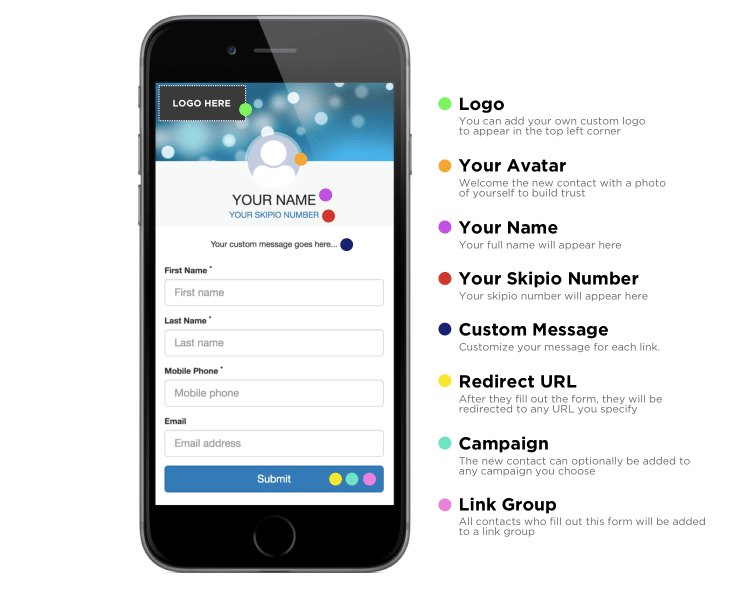
Creating a human-centered texting experience is essential for businesses that want to actually build relationships with their customers.
Texting is a powerful communication tool that can be used to engage customers and create a sense of connection between them and the brand. With the right strategies and execution, texting can be an effective way to build loyalty and trust and strengthen customer relationships. This results in having a loyal customer base, which will ultimately increase sales.
The key to creating a successful texting experience is to focus on the needs and preferences of your customers.
Here are some tips to keep in mind when creating a human-centered texting experience:
1. Know Your Audience
Customers often feel frustrated when their requests or inquiries are answered with generic, impersonal responses. This leads to them feeling ignored or undervalued by the business. Take the time to get to know and understand who your customers are. Learn their needs, preferences, and expectations to ensure they go through the best buying experience possible.
This includes learning:
- How they like to communicate
- How they prefer to buy/schedule
- How often they want to hear from you
- What products/services they know they need
- What products/services they don’t know they need but would still solve a problem
Understanding these things then gives you a competitive edge. As you do a better job of anticipating and meeting customer needs, you differentiate yourself from competitors.
You won’t immediately know specifics about every customer, of course. When texting new leads for the first time, your messages should reference whatever product or service they initially contacted you. No one wants to receive a message about something they have no interest in. So, if they filled out a form on a certain product page and asked for more info on that product or specifically told you through a “text me” box that they wanted pricing info on a service, your messages to them should address those questions.
When you know your audience, it’s easier to segment customers into different groups based on their preferences and buying choices.
For example, you might create segments for customers who have recently made a purchase, customers who have shown interest in a specific product or service, and customers who have not purchased from you in a while. This allows you to better create personalized, targeted messages for each group. But what’s the best way to get to know your customers and what they actually want to receive messages about? Just ask them!
2. Ask for Feedback and Build Relationships
Directly ask for feedback to understand how customers feel about your business, what you sell, and additionally, their overall texting experience. Ask customers for their thoughts and ideas on your newest product release, customer service, product features, etc. and use their feedback to make changes.
While you can solicit feedback through email surveys or phone calls, texting customers provides an even simpler way to engage them in a conversation. After all, texting is supposed to be two-way communication, so don’t shy away from asking questions to help you learn ways to improve not just what you sell but also your outreach. Asking for and collecting feedback also helps you build a genuine relationship with your leads and customers.
Use text messaging to stay connected and routinely engage customers in genuine conversations about how they use your products, what services they most enjoy, or how they need help. Doing so makes it easier to talk about future purchases or potential upgrade options without sounding too salesy.
By building authentic relationships, you take advantage of opportunities to wow customers, boost sales, and build loyalty because people buy from people, not businesses.
3. Personalize Messages
Use all the research and feedback you get from customers to write messages people will want to reply to. Generic, impersonal texts come off as uninviting, almost like they’re not worth responding to, which then makes customers or leads less likely to respond. Being impersonal also makes you sound more like a bot. That means your messages will be ignored or outright deleted.
To combat these issues, tailor messages to each customer, considering their preferences, interests, and needs. This is also why segmenting your customers is so important.
Reference this sort of customer information in messages to clearly show the message was intended just for them:
- Favorite product
- Most recent purchase/purchase history
- Interests and preferences
- Context of feedback and reviews
- Demographics (age, gender, location)
- Loyalty status
- Previous text message responses
In Skipio, businesses use Custom Fields and CRM integrations to automatically pull in this information, even when messaging large groups.
4. Be Responsive
Respond quickly to any incoming texts or inquiries from both leads and customers. You want to follow up as quickly as possible, as this helps ensure that recipients feel valued and like you aren’t ghosting them. You want them to know there’s a real person reading and replying to messages.
To quickly follow up, set up messaging automations. You can still be personable and sound like a human while sending automated messages (as you are the one actually writing the messages, they are just automated!). Automating your outreach is the best way to effectively scale your communication efforts. Because no matter what you do, there isn’t a way to keep up with all the messages or questions you receive in a timely manner unless you use automation.
Use automation to keep conversations going and to create real-time conversations for times when you’re busy and can’t be there. A lot of text messaging outreach can be automated, like when you want to…
- Connect with leads who visited your website
- Send appointment reminders
- Share relevant educational content
- Offer coupons/discounts
5. Use MMS to Encourage Interaction
Texting doesn’t have to be just literal text! Since it’s a more personal method of communication, get creative with your messages and use multimedia. This includes using photos, videos, GIFs, and emojis to engage with customers. Boring, bot-like messages don’t inspire people to reply. Those messages just get ignored.
Of course, the level of casualness you use depends on what your business is, though even professional photos still create a more engaging messaging experience.
6. Prioritize Genuine Conversations
You should be having actual conversations when texting; to do that, you must use conversational language. Basically, just text your leads and customers as you would a friend and show your personality in your messages. You want to get a response, keep the interaction going, and build a genuine relationship.
Ask questions to grab attention and to start a conversation. Questions give leads and customers something to care about and focus on, which helps them become more invested in the conversation, which leads to more replies. Make it worth their time and effort to respond by asking specific questions you wouldn’t clearly already know the answer to.
Maybe most important in creating a conversational texting experience is not sending texts that are like emails. Avoid overthinking your messages or making them long. Keep messages short and to the point and avoid corporate jargon. When you do these things, customers will respond and engage with your messages rather than ignore them because you actually sound like a person trying to talk with them, not at them.
Text Like a Human
At its core, a human-centered texting experience puts the customer first. It’s about understanding your customers, sending them meaningful and relevant messages, and creating an overall experience that’s enjoyable. To learn more about how you can add conversational, human-focused text messaging to your business, take a tour of Skipio. And just remember, text like a human, not a bot.



